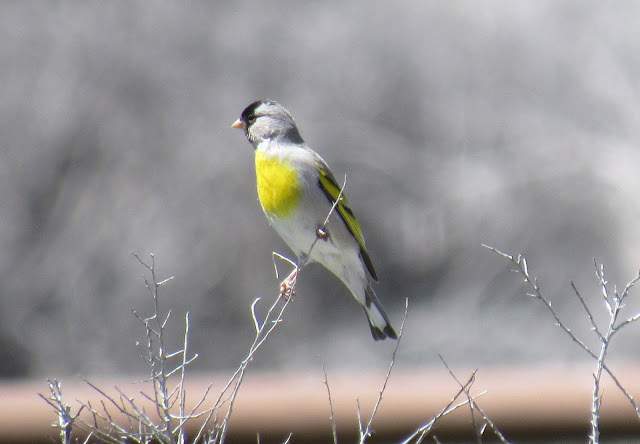A California Endemic: Lawrence's Goldfinch
Although some finches may be lumped together with other LBJs, the Lawrence's Goldfinch is unlikely to be mistaken for anything else. This stunning little goldfinch is a special bird to Californian naturalists, as it is nearly endemic to our state (some also breed in northern Baja California).
Lawrence's Goldfinches are migratory birds, and exhibit highly erratic patterns of movement from year to year. This makes them a rather unpredictable species; they may have successfully bred in one location last year, but that doesn't ensure they will return this year. Their unpredictable movements also make assessing the health and stability of their populations difficult.
Scientists suspect their yearly movements may be partially determined by the presence of water and food sources - namely, seed crops. Unlike most birds that migrate north to south between summer and winter, Lawrence's Finches move from east to west, wintering as far east as Arizona and New Mexico, and moving west into California to breed.
Like other goldfinches, Lawrence's prefers open habitats, often visiting chaparral areas and weedy fields in search of the seeds of annual plants that make up the bulk of its diet (fiddleneck and chamise are two favorites). These finches prefer perching on plants and picking off seeds to foraging on the ground. Lawrence's Goldfinches nest in trees, and breeding habitat includes riparian areas, oak woodlands, pinyon-juniper woodlands and chaparral.
Though this species appears stable, its somewhat mysterious nature means that it could quietly suffer decline without much notice. Like so many birds, it is threatened by loss of the open habitat it depends on.
These photos were all taken at Carrizo Plain National Monument last spring, where Eric and I encountered a flock foraging near the KCL campground. I hope to be fortunate enough to encounter another flock of Lawrence's Goldfinches during my wildland wanderings this year, since one never knows where they might turn up! Seeing these beautiful, uncommon, endemic birds is always a huge treat!










Comments
Post a Comment